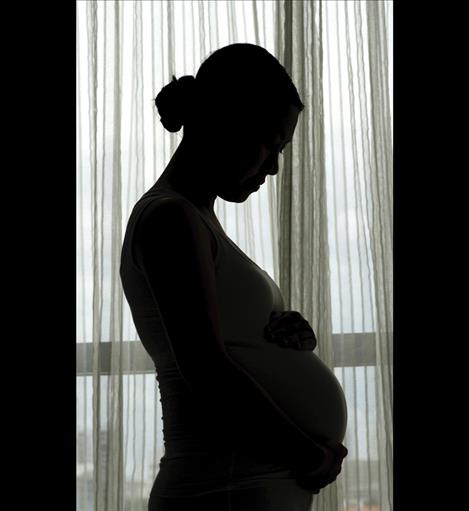Community working to help moms affected by drugs
Hey savvy news reader! Thanks for choosing local.
You are now reading
1 of 3 free articles.
LAKE COUNTY – Three years ago local medical providers noticed a high number of babies being born already addicted to drugs.
Providence St. Joseph Medical Center in Polson and St. Luke Community Healthcare in Ronan decided to work together to find out the exact numbers of babies born with drugs in their systems. Every time a test was positive, healthcare workers added that number to a collaborative database.
The total number of babies born addicted to drugs in 2013 was at 13 percent. In 2014, the number went up to 24 percent. And in early part of 2015, the number hit 31 percent.
“We collect the numbers four times a year,” said Erin Rumelhart, director of nursing at St. Joseph adding that the numbers went down to 24 percent by September.
Thirty-one percent was an astounding number. It triggered medical providers to pause. They took into consideration that a few variables might be skewing the numbers, including more focus on testing. It could be that the numbers were high in the past, but fewer babies were tested. The record number was high no matter how much it had gone up or down over the years. The number was too high even at the beginning of the study at 13 percent.
“The problem is so profound,” said Caroline McDonald, St. Luke Community Healthcare Foundation executive director. “Most people see the problem as too big, but we decided we had to do something. This is a wake-up call for our community. If 30 percent are already born with extra struggles, think about what our community will look like in 20 years. This is destroying us from within.”
And so the Hope Project was created. The program is a collaborative effort between the Lake County Public Health Department, Tribal Health, St. Luke and St. Joseph hospitals. They recently received a grant for $200,000 from the Montana Health Care Foundation to implement their ideas. The program is in the beginning stages of development.
“We want to really wrap our arms around these moms and support them,” Rumelhart said. “We don’t want to demonize these moms. We want to help these moms and that helps the babies.”
The program is currently being structured to help moms get more nonjudgmental prenatal care and to connect them with services unique to their situation that might include transportation to medical appointments, addiction counseling, and help with developing lifelong goals.
“We want to meet the patient where they are in life and help them get what they need,” McDonald said. “It’s not that we are without services in this area, but we want to help remove any barriers to getting those services, including helping a woman embarrassed about asking for help.”
Changing the way society thinks about drug addicts is part of the effort that will help those moms.
“When you think of a drug user, you have a picture in your head, but 30 percent of them are drug-impacted moms,” McDonald said, asking people to imagine a woman that loves her child but can’t overcome an addiction.
“It’s the woman that had back surgery or needed other prescription drugs,” McDonald said. “She finds out she is pregnant and maybe she is addicted to those painkillers.”
The drug problem is not specific to one type of person, culture or socioeconomic status. McDonald said any mom can become addicted to substances.
“When (methamphetamines) first came out it was known as the soccer mom drug,” McDonald said. “Moms have a list as long as your arm of things to do, and there are never enough hours in the day to get them done. She has the kids, volunteering with the school and maybe a career. It can be insane.
“And meth gives her energy to stay up and get a lot done without needing sleep. It also suppresses the appetite. It’s the perfect storm. And soon her teeth are falling out, and maybe she is pregnant. We have to change the way we think about drug addicts. It’s a disease and they need help.”
The statistics compiled by the two hospitals don’t specify which substances the babies have in their systems when they are born, although Rumelhart says she is seeing more opioid withdrawals.
“We still see meth,” she said. “But we are seeing an increase in opioid use. That includes prescribed and not prescribed narcotics.”
The babies go through varies levels of withdrawal when they are born with drugs in their systems depending on the amount of exposure and the substance.
“Most often babies will be irritable, they will cry more, they have tremors and seizers,” she said adding that she hopes the program helps mothers so that those symptoms can be minimized along with the long-term effects of substance abuse on a child’s health.
McDonald said that other communities in Montana are working to implement a similar program, so the problem isn’t specific to this area.
“As a nation, as a world, we have many issues we are dealing with, but with this, the next generation can’t thrive,” she said. “This isn’t someone else’s problem. It’s everyone’s problem and we need to work together on it.”
McDonald said that the program is still being developed, but if anyone needs help, they can mention the Hope Project to any healthcare provider in the valley and resources will be found.

















